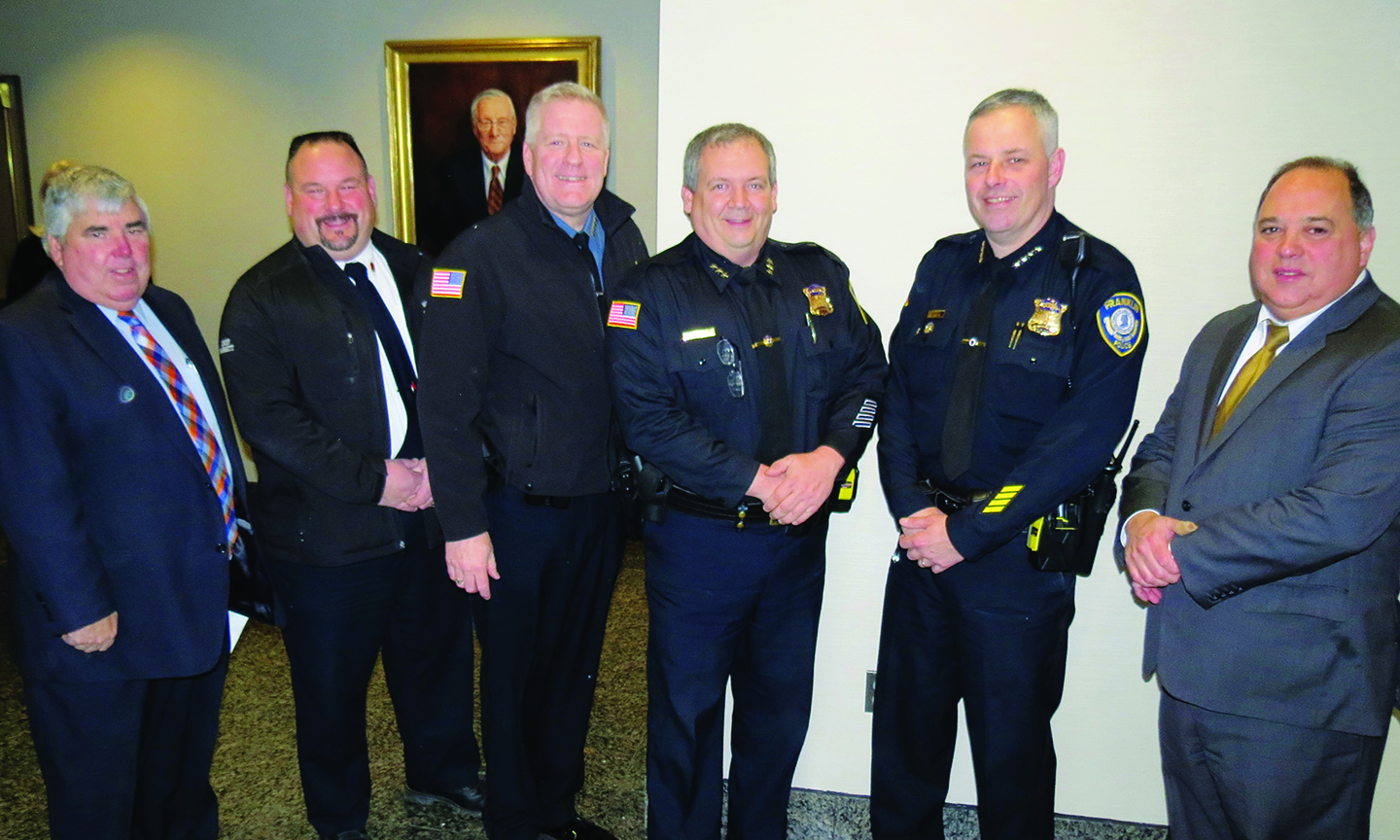Millis fire and police officials, as well as Medway Schools were represented among the more than 160 regional public health, law enforcement, education and municipal leaders who attended District Attorney Michael W. Morrissey’s recent “Marijuana Legalization – Community Strategies” seminar, organized in partnership with the Canton Alliance Against Substance Abuse, Needham Public Health, Walpole Police and Stoughton U-Knighted, to learn about public health, safety and governance issues and problems related to the new law.
In January, Millis Police Chief Chris Soffayer indicated his department would require in-service training to become up to speed with the ramifications of the law. Chief Soffayer, as well as Fire Chief Rick Barrett, both attended the seminar.
Other towns are grappling with the same issues, particularly of giving patrol officers the tools they need to make sure drivers don’t drive high. Nearby Franklin has 80% of its staff trained in ARIDE, Advanced Roadside Impairment Driving Enforcement Training, a two-hour training, and three on staff are trained as Drug Recognition Experts (which helps to facilitate ARIDE training), which requires a two-week training and can be costly for departments. Smaller Holliston has just one officer trained in ARIDE, says Sgt. Matthew Waugh, of that department. He recently held a round table discussion for officers in Ashland, Holliston and Sherborn.
Some of the concerns officers brought up included OUI drugs.
“There’s a case currently in the Massachusetts courts right now, Commonwealth Vs. Gerhardt, an OUI drug case,” says Waugh. “With OUI alcohol, the courts have an accepted, standardized field sobriety test.” Road officers, he says, are trained in FST, or field sobriety tests. “So, with Gerhardt, the defense counsel is arguing that FST’s should not be admissible during court proceedings.” The court has yet to rule on the case, but the issue is one of concern among officers.
Officers also indicated they were concerned about back-door deals by home growers of marijuana, in which someone might gift the marijuana but charge for a plastic bag, as well as being able to determine from the squad car exactly how much marijuana to seize if someone has more than one but less than two ounces. Similarly, questions arise when it comes to large amounts of marijuana. Residents may have six plants per person, up to 12 per home, and each plant can produce a pound of the drug per cycle. If officers come across a large amount of the substance, they must somehow determine if the substance did or did not come from the legal plants.
At the Norfolk County seminar, Attorney John Scheft from Law Enforcement Dimensions detailed the intricacies of enforcing the new hodgepodge of law, and Walpole Police Chief John Carmichael, whose personal research into the impacts marijuana legalization has included visiting Colorado manufacturing and selling facilities, along with Needham Health and Human Services Director Timothy McDonald fielded questions from the group.
Attorney Katherine Laughman from the firm Kopelman & Paige discussed the regulation and taxation of marijuana, including the steps towns need to take to regulate employees getting high at work – since marijuana will no longer be defined as a controlled substance – and ways to zone where pot shops can locate.
Following the seminar, Local Town Pages was able to talk with Millis Fire Chief Rick Barrett. In addition to the legal implications, Barrett is concerned from a safety point of view.
“The biggest concern that I have is in the public safety realm. Is a larger amount of marijuana going to be available to the kids? There’s a whole new concern with edibles. The biggest thing I took from it is that the amount of THC that is in one serving of an edible can be upwards of 70% in one gummy bear, compared to a marijuana cigarette, which is 2.5%.” Packaging of the products, as well, says Barrett, seems to be made to entice children.
Another concern the Fire Chief brought up had to do with home “grow facilities in their basements, where there’s humidity and electricity and lighting. Those things just add to the amount of chances there could be electrical issues and such, and with humidity and moisture, a lot of lighting in a basement can be a recipe for some sort of hazard.”
Barrett, Chief Soffayer and school and town personnel recently met on February 14th, organized by Selectman James McCaffrey, to proactively discuss some of these concerns and implications for the town.

Issue Date:
March, 2017
Article Body:
